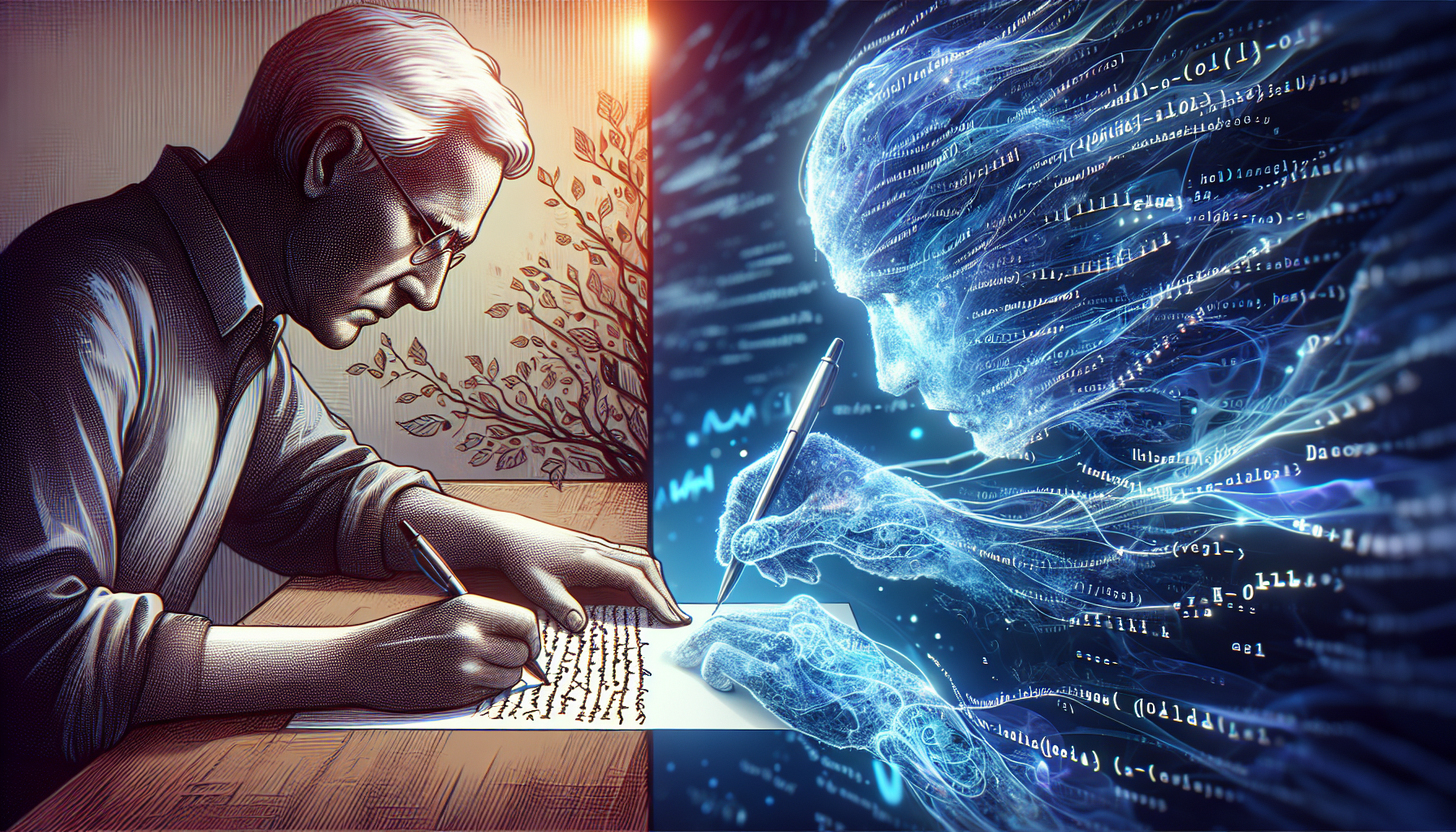Published at: March 28th, 2025

The world of content creation is changing fast. With the rise of AI-generated content, many wonder if human writers will soon become obsolete. Automated blog writing is becoming more popular, but can it truly replace human creativity? Let’s explore AI vs human writing and see what the future holds.
What Is AI-Generated Content?
AI-generated content refers to text written by artificial intelligence. It uses machine learning and natural language processing to create blog posts, articles, and other forms of written content. AI tools like ChatGPT, Jasper, and Writesonic analyze vast amounts of data to generate human-like text in seconds.
The Advantages of Automated Blog Writing
AI-powered tools offer several benefits that make them attractive for businesses and content marketers.
1. Speed and Efficiency
AI can produce large amounts of content in a fraction of the time a human writer would take. This is useful for businesses that need frequent blog updates.
2. Cost-Effective
Hiring a human writer can be expensive. AI content tools offer a more affordable alternative, especially for startups with limited budgets.
3. SEO Optimization
AI-generated content is often optimized for SEO. It can include relevant keywords like "AI-generated content," "human vs AI writing," and "automated blog writing" to help websites rank higher in search engine results.
4. Consistency
AI ensures consistency in tone, style, and quality. Unlike human writers who may have off days, AI maintains a steady level of performance.
Limitations of AI Content Writing
Despite its benefits, AI writing still has limitations. Here are some areas where it struggles:
1. Lack of Creativity
AI-generated content lacks originality. It pulls from existing data and can struggle to create truly unique, thought-provoking pieces.
2. Limited Emotional Depth
AI does not have emotions. It may struggle to craft engaging stories that connect with readers on a deeper level.
3. Plagiarism and Repetition
Although AI tools strive to generate unique content, they sometimes produce text that is too similar to existing articles. This can lead to plagiarism issues.
4. Context and Accuracy Issues
AI may misinterpret data and generate incorrect or misleading information. Human writers have better judgment in ensuring accuracy.
Why Human Writers Are Still Important
Human writers bring qualities that AI cannot replicate. While AI can generate words, it lacks the human touch that makes content meaningful.
1. Creativity and Originality
Humans can think outside the box and generate fresh ideas. They can craft compelling narratives that AI cannot.
2. Emotional Connection
Great writing evokes emotions. Whether it’s humor, empathy, or inspiration, human writers can create content that resonates with audiences.
3. Critical Thinking
Writers analyze topics, provide insights, and offer new perspectives. AI, on the other hand, simply regurgitates existing information.
4. Brand Voice and Personality
Every brand has a unique voice. A human writer can adapt to a brand’s tone, style, and personality, something AI struggles with.
The Future of AI vs Human Writing
AI-generated content is improving, but it won’t fully replace human writers anytime soon. Instead, AI and humans will likely work together. Businesses can use AI for efficiency while relying on human writers for creativity and depth.
How to Use AI and Human Writers Together
-
AI for research and drafts: AI can assist writers by generating ideas, outlines, or drafts, saving time.
-
Human editing and refinement: Writers can refine AI-generated content, adding a personal touch.
-
AI for SEO optimization: AI tools can help with keyword placement and readability while humans ensure content quality.
Final Thoughts
AI-generated content has its place in modern content creation. It offers speed, efficiency, and SEO benefits. However, it lacks the creativity, emotional connection, and originality that human writers bring. Instead of replacing humans, AI should be seen as a tool to enhance content production. The best approach is a balance between AI and human input, ensuring high-quality, engaging, and SEO-friendly content.

